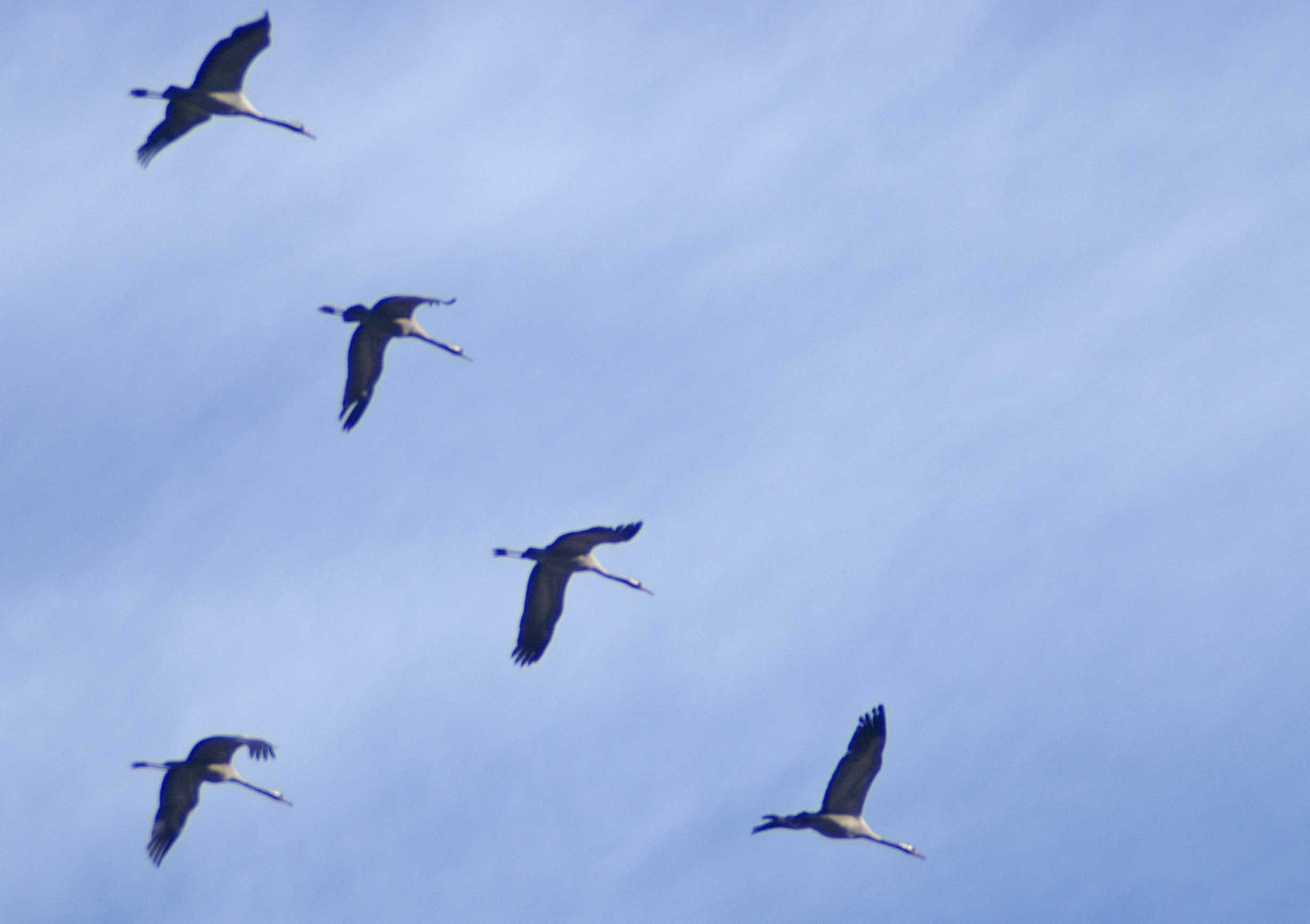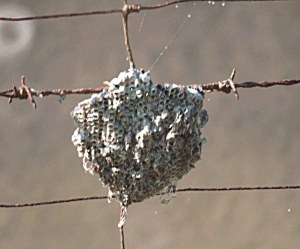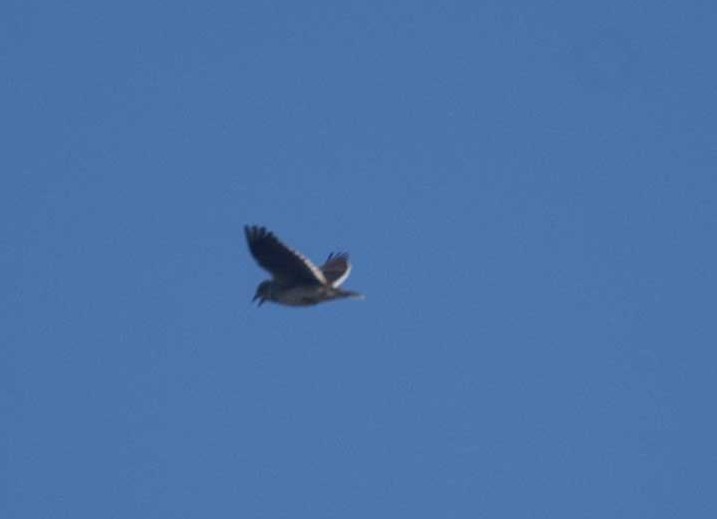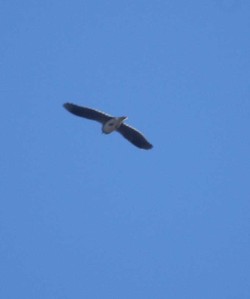The first GONHS outing of this year took us to La Janda, nr. Tarifa, the place to visit during the winter to see large numbers of Common Cranes and White Storks gathered together as well as a myriad of other wintering and passage birds that are attracted to this rich, open agricultural site. The trip was led by Dr. Keith Bensusan and was a little different to our usual outings as we were guided by Stephen Daly, a professional guide who knows the locality inside out, is very aware of what may be around at any given time and where best to find it. He also has privileged access to areas that are on private land and usually closed off, so although many of us on the trip have visited the area many times before, we were able to view parts of the site that were fresh to us.
A large group of members (21 of us), met up with Stephen at the Apollo XI venta, conveniently located a short way from the entrance to the La Janda site. After coffee and breakfast there was a little shuffling around to find everyone a seat in a 4X4, as the tracks around the site are weather-worn and not particularly friendly to 'normal' cars. We set off as a convoy of 6 cars, showing number plates from Gibraltar, Spain and the USA which evoked quite a bit of curiosity amongst other road users throughout the day.
We began our birding quest on land belong to el Cortijo de Haba, scanning the ploughed fields either side of a track. It was cold and quite misty there, but there were still birds to be seen, albeit mostly distantly; we saw our first Common Cranes flying and quite a few Cormorants crossing back and forth. There were Storks, Cattle and Little Egrets present, a Buzzard hunched up on a distant fence, Red-legged Partridge at the field's edge, Corn Buntings and Stonechats. We could hear Larks in the bare muddy fields, most likely Crested, but their superb camouflage made them difficult to pick out and although there was movement amongst them flights were low and short and not at all helpful to us.
We drove on to the La Janda site and turned in to be greeted by mist that shrouded the land to either side of us. The first birds we picked out were Lapwings that were flying around despite the reduced visibility that landed in the grassy field to our left.
The sun, quickly gaining in strength began to burn off the mist and birds began to move around more freely. Perching places are sparse in this part of the site; a sizeable mixed flock of Linnets, Goldfinches & Chaffinches flew into this small bush, with more alighting on the grass stems below to feed on grass seeds.
There was an interesting departure from our usual route at this point; we would have continued driving and made a left turn onto the long main track here, but Stephen had gained permission for us to pass through a post and wire gate to the right, so we left our cars and continued along here on foot.
The track leads between fields with the river on one side and a dry ditch on the other. There were numerous Chiffchaffs along here amongst the reeds, Stonechats perched up atop stems and posts and Corn Buntings sang from the wire fence. Stephen had visited the site during the last week when there were large numbers of Snipe and Common Cranes here, but the field was being ploughed this morning, moving the Cranes on. We did however see Meadow Pipits, a Green Sandpiper and more Lapwings and there were still Snipe in the field opposite, with Calandra Larks. With binoculars it was possible to see very large numbers of Storks gathered at the back of the fields and another perched Buzzard. By the time we turned around to walk back the sun had all but burnt off the mist and it was feeling much warmer. To our delight Calandra Larks were flying up high to sing and to display flights against the clear blue sky.
Calandra Lark-Melanocorypha calandra-SPANISH: Calandria común
Calandra Larks are big, heavily built larks with a large head, stout Greenfinch-like bill and a black patch on neck-side. Characteristic in flight, with dark wings (all black below) with broad white trailing edge. Display sings in circling song flight, often very high up; the long black wings and closed tail give the impression of a much larger bird. A typical Steppe species favouring fertile grasslands, widespread over much of Spain and parts of Portugal, generally below 600m. There has been a noticeable decline in numbers in recent years due to modern agricultural practises. Feeds on seeds, shoots & insects. Calandras are thought to be non-migratory.
A Spoonbill was spotted flying, seeming to be trailing a leg. Back at the bottom of the track we heard Fan-tailed Warblers 'zitting' amongst the long grass, heard a Cetti's Warbler from somewhere by the water and saw a pair of Mallard flying.
Driving along the main track we had some great views, a Swamp Hen (I still prefer Purple Gallinule), Coots, loads more Cattle Egrets, Corn Buntings and Stonechats. There were Little Egrets, Grey Herons, and a distant hovering Kestrel. We stopped to photograph 3 Cranes close by in a field, not brilliant, but turned out to be our best view of the day of Cranes on the ground.
The convoy came to a halt to admire three beautiful Spoonbills that stood at the edge of a flooded field, settling down to take a rest.
We stopped again a little further on as Golden Plovers, still in winter plumage and incredibly well camouflaged against the bare brown earth were spotted in a field together with yet more Lapwings. Visible only with the aid of a telescope, we may well have passed them by if they had not been pointed out to us.
We turned right off the main track, crossed the bridge over the river and stopped a bit further on to watch a well-spotted Black-winged Kite perched at the top of a small tree. The beautiful bird then flew out across the field it had been scanning, hovered Kestrel-like over a spot on the ground then returned to its perch.
We continued down the length of straight track that is lined with small willow trees, currently bearing catkins. The track surface here was full of potholes to avoid and from our position at the back of the convoy, the only birds we saw were a couple of Chiffchaffs and Goldfinch. We stopped briefly and getting out of the car inadvertently disturbed a bird we were hoping to see - a Great Spotted Cuckoo left the cover of the shrubs and flew low down, close to the hedge back along the way we had just driven.
The next spot was of a Little Owl that had been sitting up on one of the huge arms of one of the irrigating contraptions; it was long gone by the time we tail-enders arrived! We did see a Marsh Harrier here though, quite distant above the hills to our left, but still good to see. Causing a little more excitement a Hen Harrier flew into view on the opposite side of the track, again distant, but it was possible to see it was a female that was then joined by another bird, probably the male. As we drove off we spotted a very tight flock of dark-coloured birds flying away from us that turned out to be Glossy Ibis.
We carried on up to the farm, leaving the cars once again to the scan around the very different terrain here. To one side there is rough pastureland where cows were grazing around clumps of flowering Asphodels; this is part of the Hen Harriers' territory and they would have been around here when we saw them from lower down.
 |
| A huge field full of flowering Asphodels with grazing cattle, cork oaks & distant mountains - this is Hen-Harrier territory |
Parked close to a cow shed with a very muddy enclosed area in front of it that was full of curious cattle, the air around us was rather pungently fragranced, which some felt added to the campo atmosphere but which others found strangely offensive (townies!). But, where there are animals there are generally insects and small rodents, therefore birds. There were large numbers of Jackdaws all over the place that Stephen told us nest on the rock faces of a local quarry, and a little crowd of Chiffchaffs that were perching in the squares formed by a wire fence surrounded by yellow mustard-type flowers, diving out acrobatically to chase flies. A single Barn Swallow was spotted and a Booted Eagle that was perched up on a telegraph pole pointed out, 2 Buzzards circled, then a Hen Harrier flew in and scanned the area in front of us (pastureland surrounded with olive and cork oak trees and other scrubby vegetation). We heard the distinctive honking of Cranes flying and two separate groups headed straight for us then passed close over our heads. Lovely views of these large, elegant birds.

- Absorbed by the Cranes we had failed to notice that a huge flock of White Storks had gathered behind us and were beginning to wheel characteristically and drift across above us: a breathtaking display.
- Moving along a short way we stopped again as Stephen spotted a Great Spotted Cuckoo that had been perched but that dropped to the ground, disappearing from view. Somehow someone picked up a Little Owl sitting in a tree above a bramble patch, but I could not see it, sorry.So, onwards to lunch - which all GONHS outing regulars will know and appreciate is an essential part of the day's proceedings. Stephen did us proud, guiding us to 'Cortijo Los Monteros', which is located on the Medina-Benalup road (km6). We all enjoyed our choices from the tasty and generously portioned, but very reasonably priced 3 course 'menu del dia', that we ate seated at a very long table in front of a huge roaring wood fire.After lunch Stephen was taking us to a nearby reservoir. We stopped en route at a beautiful woodland spot along the road to look out for the rare Spanish Imperial Eagles that nested here for the first time last year, an unexpected event that has caused much excitement.

We had no luck with the Imperial Eagles, but we thoroughly enjoyed the moments of peace and tranquillity of our surroundings and while some of us were content to wander around and take it all in, others were diligently scanning the sky for the elusive raptors. Stephen heard a Green Woodpecker, or Iberian Woodpecker as he referred to it and whistled back to it, hoping to bring it to us, but it could probably see we were quite a crowd and chose not to. More Buzzards and a Sparrowhawk were spotted and then excitement was aroused by two beautiful Red Kites directly overhead. They seemed as interested in us as we were in them and they spent some time moving around us slowly, whilst peering down.
- A stunning Red Kite, looking a bit frayed around the primaries peering down at the strange gathering of humans below it
Arriving at the reservoir we got our bearings and realised we were at the far side of the huge expanse of water that lies to the left of the main AP-4 the Algeciras - Sevilla road, that we had all seen and wondered about dozens of times but had no idea how to access. Well now we know - it is the Barbate reservoir constructed in 1992 to prevent the agricultural land at the site we had just visited from flooding. That seems a little ironic as that site was historically a lake that was drained so the land could be put to agricultural use. The reservoir is absolutely huge, stated as covering 2,537 hectares, but now undoubtedly swelled by the recent heavy rainfalls. As with most reservoirs it appears to be a fairly sterile environment for birds, although apparently Osprey have nested there in previous years. There was not much to see here, we could hear Sardinian Warbler amongst the scrub growing on the bank we were standing on and some distant ducks were Mallard and possibly Pintails, but apart from a herd of goats grazing in an idyllic spot on a grassy hill near the water, there were no signs of activity. It's a lovely spot though with views to Sierra del Algorrobo and their highest peak, el Picacho, the location for several previous GONHS outings.

- View to el Algorrobo mountains
- Bird List for the day: Cormorant Phalacrocorax carbo, Cattle Egret Bubulcus ibis, Little Egret Egretta garzetta, Grey Heron Ardea cinerea, White Stork Ciconia ciconia, Spoonbill Platalea leucorodia, Glossy Ibis Plegadiss falcinellus, Mallard Anas platyrhyncos, Pintail Anas acuta,Red Kite Milvus milvus, Griffon Vulture Gyps fulvus, Hen HarrierCircus cyaneus, Marsh Harrier Circus aeruginosus, SparrowhawkAccipiter nisus, Buzzard Buteo buteo, Booted Eagle Hieraaetus pennatus,Kestrel Falco tinnunculus, Red-legged Partridge Alectoris rufa, Pheasant Phasianus colchicus, Coot Fulica atra, Swamp Hen (Purple Gallinule Porphyrio porphyrio, Common Crane Grus grus, Golden PloverPluvialis apricaria, Lapwing Vanellus vanellus, Green Sandpiper Tringa ochropus, Snipe Gallinago gallinago, Black-headed Gull Larus ridibundus, Lesser Black-backed Gull Larus fuscus, Woodpigeon Columba palumbus,Collared Dove Streptopelia decaocto, Great Spotted Cuckoo Clamator glandarius, Little Owl Athene noctua, Green Woodpecker Picus viridis (Iberian race sharpei)(heard), Crested Lark Galerida cristata, Calandra Lark Melanocorypha calandra, Barn Swallow Hirundo rustica, Meadow Pipit Anthus pratensis, Pied(White) Wagtail Motacilla alba, Black Redstart Phoenicurus ochruros, Stonechat Saxicola torquata, Fan-tailed Warbler Cisticola juncidis (heard), Cetti's Warbler Cettia cetti (heard),Sardinian Warbler Sylvia melanocephala, ChiffchaffPhylloscopus collybita, Spotless Starling Sturnus unicolor, JackdawCorvus monedula, House Sparrow Passer domesticus, Chaffinch Fringilla coelebs, Goldfinch Carduelis carduelis, Linnet Carduelis cannabina, Corn Bunting Miliaria calandra (51 species)

A happy band of members at the end of a great day out Further information & links:Stephen Daly keeps a photoblog that has loads of stunning photographs of the many birds he encounters in the area, including Great Spotted Cuckoos, Black-winged Kite and Imperial Eagle: http//:www. andalucianguides.blogspot.com














No comments:
Post a Comment